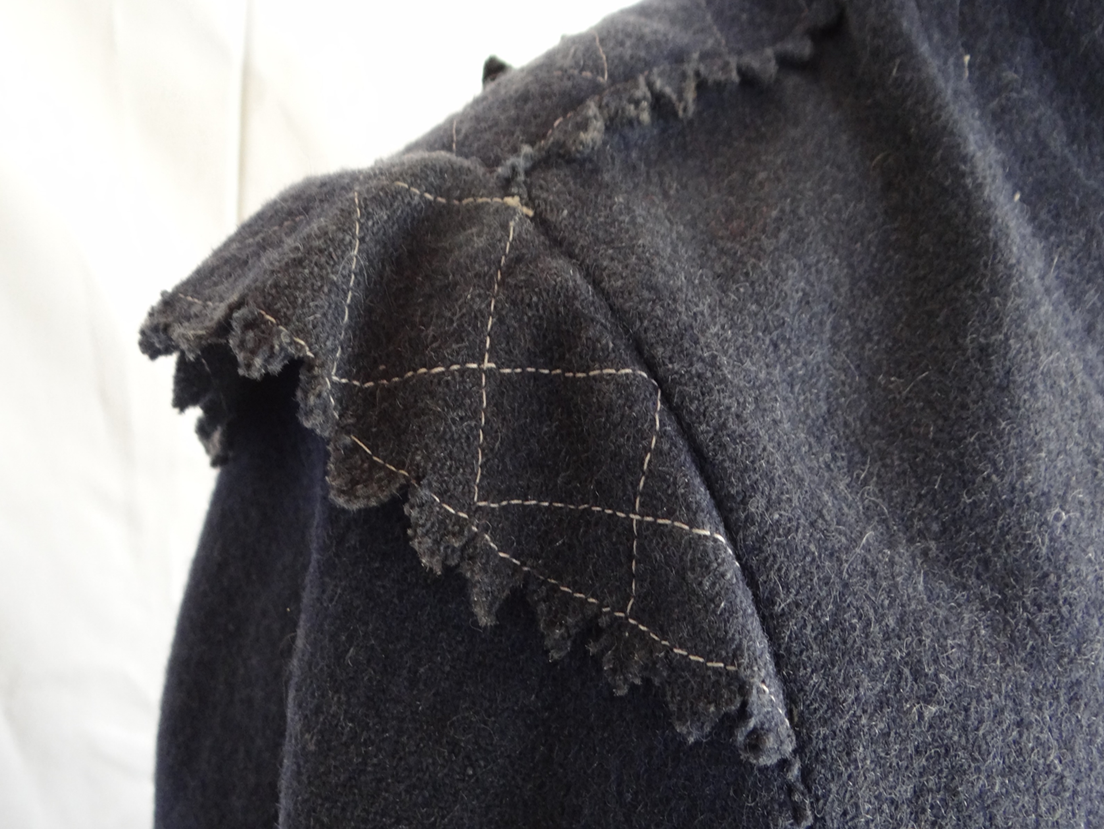Made from wool, the kab an aod was water resistant, warm and acted as a windbreaker, even though it had no lining. It had a hood, epaulettes and a front pocket to protect the wearer’s hands from the elements. Sometimes known as a ‘froc’, the felt fabric it was made from was very tightly woven to keep the wearer dry. The edges of the fabric were cut with pinking shears so that they wouldn’t fray or unravel. Before the term kabig became the norm in 1950, which until then had only been used for children’s clothing, the kabig took its name from its traditional off-white colour and was known as a kab gwenn, or “white coat”. The blue and red colours of the selvedge were typical of the cloth manufactured by the Morin establishment in Dieulefit in the Drôme region, which replaced the cloth from Montauban (Tarn-et-Garonne) and the Isère region after the war. Seamstresses in Léon used this fabric from the southeast of France to decorate the front of the kabigs until Morin stopped making it in 1959.
Translation: Tilly O'Neill


